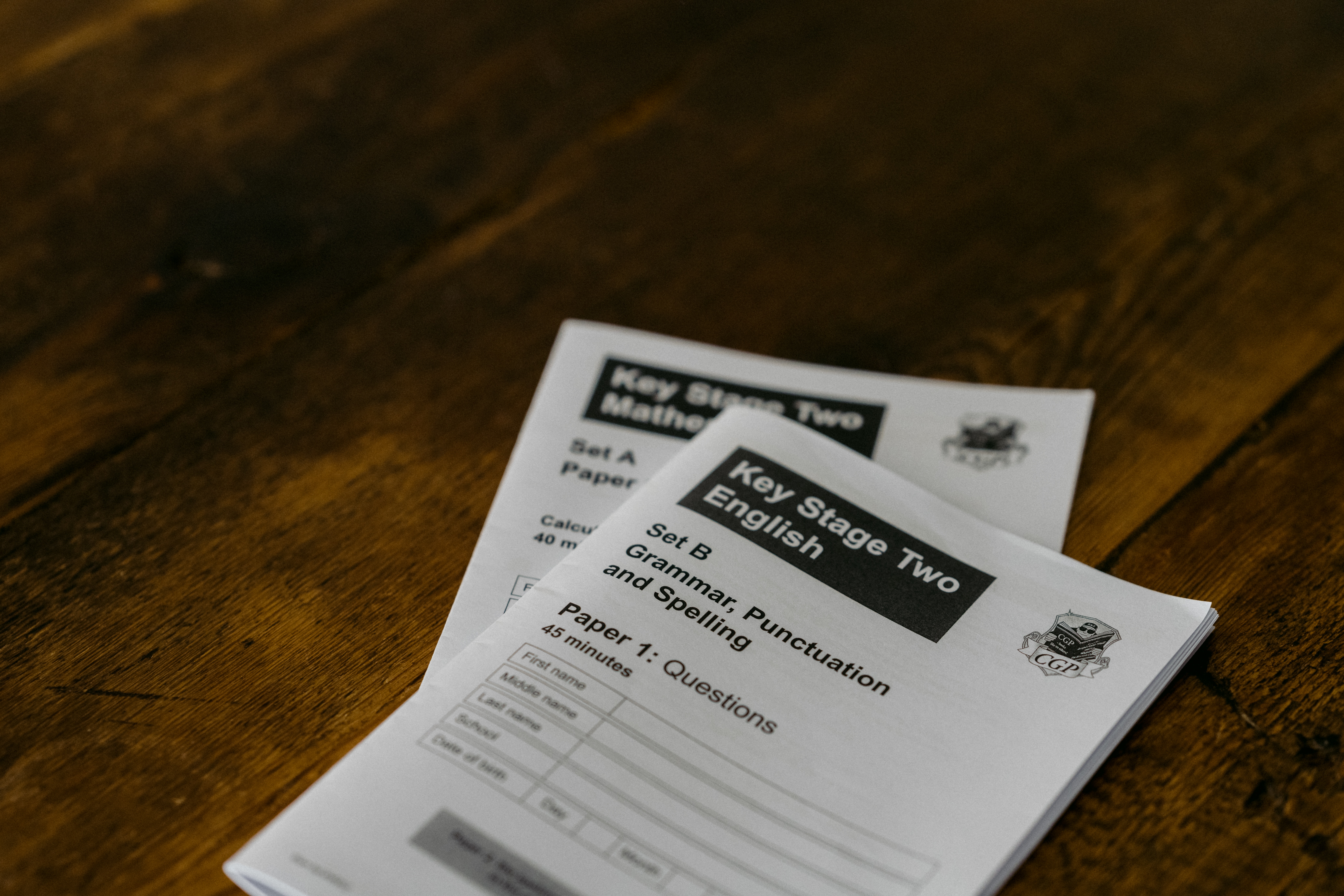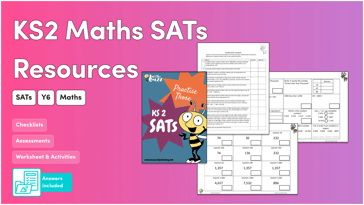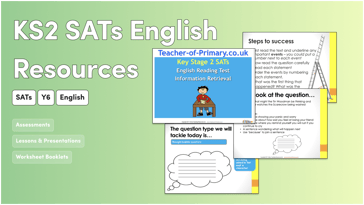KS2 SATs 2024: Teachers' Ultimate Preparation Guide

Preparation is underway for the 2024 SATs assessment period. With the Easter break approaching earlier than last, we only have a limited number of weeks before our students sit those all important questions. But as a teacher how can we be best prepared to help them?
We know this time can be stressful and it’s essential to have the right tips and resources to ensure your students succeed. Today, we’ll guide you through everything you need to know to prepare yourself and your pupils for KS2 SATs.
Table of Contents:
- What are the KS2 SATs?
- When are the KS2 SATs 2024?
- 5 Tips to Help Teachers Prepare Themselves & Pupils for SATs Success
What are the KS2 SATs?
KS2 SATs are the tests Year 6 pupils sit at the end of the year. These tests are used to:
- Measure a school’s impact,
- How a school measures up to local and national standards,
- Give pupils, parents, and secondary schools a benchmark of how they’re doing academically
To help prepare you for the 2024 KS2 SATs, we’ve pulled together all the information you need. Claim your FREE downloadable guide to everything you need to know about KS2 SATs 2024. This guide is great for a quick staff meeting!
When are the KS2 SATs 2024?
2024 KS2 SATs will take place from Monday 13th May 2024, through to Thursday 16th May 2024.
- Monday will see pupils sit their English papers. The first paper tests their grammar, punctuation, and vocabulary, and the second paper assesses their spelling.
- Tuesday continues testing pupils’ English skills, this time testing their reading.
- Wednesday moves us on to Maths, with one paper on arithmetic and a second on reasoning.
- Thursday concludes SATs week with a third Maths test, which is a second reasoning test.
Results for SATs are typically released at the end of the summer term, meaning marks should be awarded around July 2024.
Now you know when the tests will be, let’s dive into some practical tips on how you can prepare for SATs, both for yourself and your pupils.
5 Tips to Help Teachers Prepare Themselves & Pupils for SATs Success
Preparation is key for SATs season. While the period itself falls over one week, the time which is carved by teachers to get their students ready can be months in advance. Our tops tips for preparing your class for SATs include:
- Emulate test day in the classroom
- Double check you’ve covered everything
- Develop a revision plan (ideally, a checklist)
- Provide help sessions in the week(s) before SATs
- Provide emotional support and guidelines
1. Emulate test day in the classroom
Preparing for SATs may seem daunting to undertake. But imagine you’re going to run a half marathon - you wouldn’t simply run 5km daily for 6 months running up to the race and then tackle the 21.5km for the first time on race day. You’d try some longer distances, you’d run on similar terrain, and you’d run wearing the same clothes you plan to wear on race day.
You should provide your pupils with the same kind of training to prepare for SATs. Emulate “race day” for them by showing them what test day will look and feel like. Dedicate a portion of a few lessons to sitting down with an old paper and working independently in silence.
If you’re familiar with running, you may know that many training plans don’t ask you to run the full distance until race day. You can use this theory here, too, by dedicating just 15 - 20 minutes to “test conditions” to prepare your pupils for what it will be like on SATs day, so their nerves won’t get the best of them.
You can use these maths SATs packs and assessments or English reading and GPS test lesson packs to get pupils used to SATs-style questions whilst working under test conditions.
2. Double check you’ve covered everything
By this point in the year, you’ve likely covered and prepared everything your pupils are likely to encounter in their SATs tests at least once. Now is the time for final SATs preparation by running through our assessment packs and checklists, so you can fall asleep soundly at night without panicking that you’ve somehow missed something.
Checklists like this KS2 Maths SATs checklist are great for checking coverage and understanding pupil confidence in all the topics that might come up. From here, you can tailor your planned SATs teaching to the topics or areas pupils are less confident in.
3. Develop a revision plan (ideally, a checklist)
Create a clear and structured SATs revision plan that covers all the essential topics and gives a quick overview of what pupils should reacquaint themselves with. Ideally, present this as a checklist so students can work through it methodically at home. If you can, take some time to go around and talk to each pupil and highlight any topics they struggled with in the past so they can pay the most attention to their weak areas.
It will be tempting to give your pupils a revision plan the size of a textbook, but just keep this down to the essentials. We can all agree the last thing pupils need is added stress when preparing for SATs.
4. Provide help sessions in the week(s) before SATs
Take your English and maths lessons in May and turn them into revision sessions to help your students prepare for SATs. In these sessions you can go over a topic they’ve learned and then provide them with quiet time to revise (and work through the checklist you created in our point above). Doing this can also provide you with time to go around to each student and help them through any areas they still find confusing.You can mix up these revision sessions to provide your students with different ways of learning, for example:
have some individual quiet time where you work with people independently,
match students in groups where one student who finds a topic easy helps others with another topic
Preparing your time ahead of SATs with different revision methods, helps to keep your students engaged while learning.
For ready-to-teach SATs prep lessons, these English reading test lessons are great as they provide a ready-to-teach PowerPoint for class discussion, and worksheets for quiet test-question prep time. You can similarly prepare pupils for the KS2 SATs GPS test using this SATs survival lesson.
5. Provide emotional support and guidelines
SATs preparation is stressful - for you, for pupils, and for parents. We all deal with pressure in different ways, so make sure you’re being mindful about how you look after yourself and how your pupils care for themselves during this time of added pressure. Here are some ways you can be mindful of your mental health and your pupils’:
Make life easy for yourself during SATs week: Try to take anything unnecessary off your plate and try to delay routine appointments you find stressful (yes, this is an excuse to push that dentist appointment to late May!). For example, if you don’t already:
- plan your outfits for the week and set them out each night
- meal plan, prep, or buy healthy ready meals for the week so you don’t need to think about what you’re eating.
Give pupils (and you) time to let off steam: In the hour or two following a test, make sure pupils have time to decompress. Maintaining a high level of focus for the duration of a test is difficult for many–if not all–pupils, so take things easy. Get outside and let everyone run around if you can, but otherwise have a fun activity ready to go so everyone can relax in the classroom. They can get back to revision and prepare for the next SATs test once they’ve had time to decompress and recharge.
Give pupils a “Get Through SATs Week” cheat sheet: Give your pupils a cheat sheet of tips for them (and for their parents) to ensure they’re prepared to get through SATs week feeling good about themselves. Suggest things like revising the topics they struggle with with a parent or older sibling, eating nutritious meals, getting to bed on time, and having a planned treat for the end of the week.
The KS2 SATs are always daunting to prepare for. They represent the end of a pupil’s primary education and everything they’ve learned, and they’re used to assess the success of a school. But with the right preparation and mindset, SATs don’t have to be overwhelming. Use our KS2 English resources and KS2 Maths resources to have your most successful SATs season yet.
If you haven’t already, sign up to Pango today and receive a 7-day free trial to access all of our scheme of work lesson resources.




